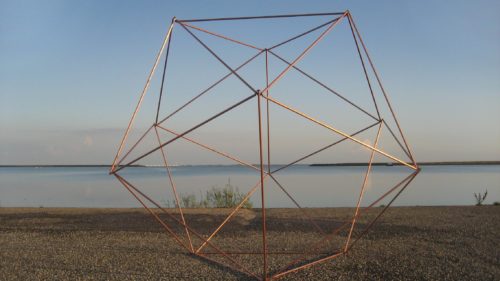FRESH AND SALT
background information
BALANCING BETWEEN FRESH AND SALT WATER
Schouwen-Duiveland lies in the heart of the southwestern delta. A former natural estuary, where the rivers Meuse, Rhine and Scheldt used to flow into the sea and the sea itself used to flow far inland twice a day.
Through human intervention the estuary has largely been restrained, with two channelled rivers, the Western Scheldt and NieuweWaterweg (New Waterway) and a dynamic of fresh and salt water that has largely been controlled. In the calm of this artificial system Schouwen-Duiveland now lies, protected against the salt of the sea by dunes, dams and dykes, yet still vulnerable: economically and ecologically dependent on a thin layer of fresh water just beneath ground level, threatened by saltwater seepage, rising sea levels and forces of nature.
Traditionally, the landscape has been used by agricultural farmers, fishermen and shellfish farmers. Some are facing a constant fight against salinization while others are dependent on the rhythm of the tide and free access to the sea.
Within this tense relationship the leisure industry, nature conservation and the economy are developing. Specialists are trying to maintain this fragile balance in the delta. They are responsible for the area’s coastal defenses, fresh and salt water management and the mobility system, and at the same time strive to maintain as much of the area’s natural resilience and robustness as possible. They have found unique solutions and are developing new techniques that are spreading worldwide, making it possible to create safer living conditions in sustainable estuaries elsewhere.
As, naturally moves with the cultural and socioeconomic developments on the island. This is why we have spent the last five years focusing on the ever-changing balance between fresh and salt water and have asked artists to visualise this permanent quest for balance. Some
In short, our project is a continuous shift from the smallest details in the landscape to questioning the principles of our culture. Although we work within the poetic confines of art, we strive to connect our thoughts, associations and questions that arise with the “real” world, in which water has a price, and is both a necessity and a threat. (Anne Ausloos)
C O M P L E T A T I O N O F T H E P R O J E C T
From March 2018 onwards the final presentation of the project will take place, with some projects continuing into 2019. This year, the main focus is on organising various activities for the public on multiple locations on the island. The aim is to further involve inhabitants, tourists, and pupils in the project.
In their contributions to the project, artists are focusing on the changing landscape and the questions and wealth that these changes bring with it.
The artists have collaborated with inhabitants and visitors, with consumers and custodians of the landscape, as well as with specialists who, based on their knowledge of local challenges, operate globally.
The contributing artists are not people who come up with solutions, but are people who perceive and think differently, and who interpret straightforward questions as a possibility for change. Thanks to their imagination the artists are able to make a contribution to raising awareness for the problems surrounding the “Balance between Fresh and Salt Water”. It is their task to make these problems tangible while at the same time making their visualisations understandable.
W E B S I T E
During the five-year period of the project, the Bewaerschole will run the website: www.bewaerschole.com This is a vital part of our communication with involved and interested parties. All relevant information to the project, from background information to upcoming activities, as well as step-by-step updates on the artists’ progress can be found there.
